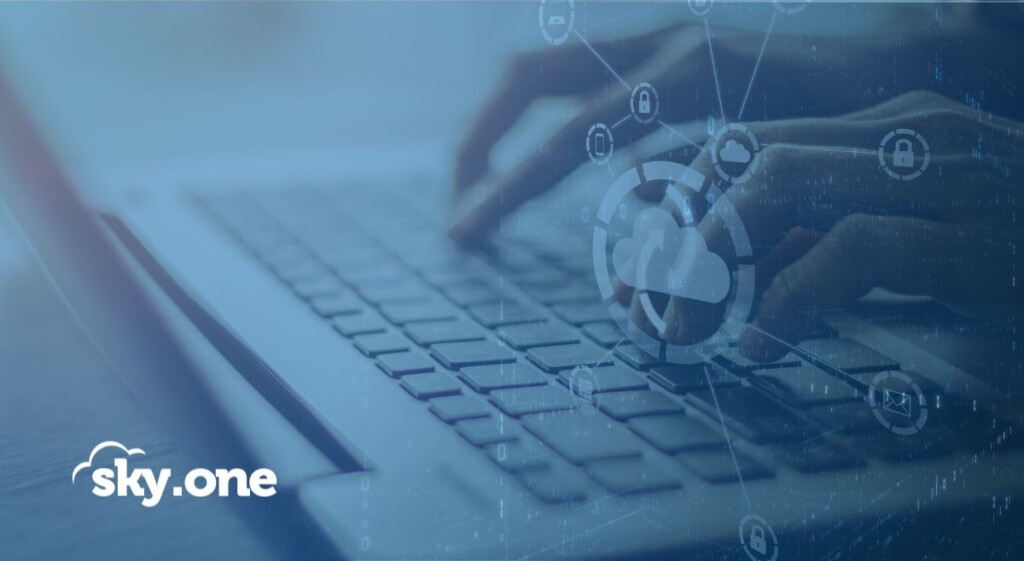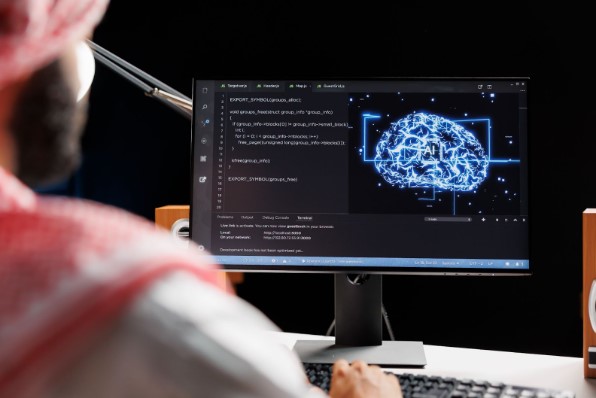Cybersecurity is a vital component of the digital age for businesses . With the increasing dependence on technology for everyday activities, protecting sensitive information and systems against cyber attacks has become paramount. It’s no longer a matter of choice – it’s an obligation.
Cybersecurity encompasses a variety of practices, technologies, and processes designed to protect networks, computers, programs, and data from unauthorized access , damage, or attacks often aimed at exploitation.
As the cyber threat landscape continues to evolve, organizations and individuals must stay informed on the latest security threats and protection strategies. Attacks such as malware , ransomware and phishing are becoming more sophisticated , requiring cybersecurity measures to adapt .
Awareness and education are key components in the fight against cyber threats. By promoting a cybersecurity culture, organizations can help prevent breaches and minimize the impact of attacks .
This involves not only investing in security solutions qualifying employees to recognize and respond appropriately to risks.
backup procedures , and strong password policies are just a few examples of the proactive measures that need to be incorporated into a comprehensive cybersecurity strategy.
Below, learn more about this scenario, the main challenges brought by technological advances and how to adequately prevent the threats posed by data exposure.
The evolution of cyber threats in Brazil and around the world
Cyber threats have advanced significantly over the past few years, evolving in both complexity and scale .
Initially, the most common attacks were limited to viruses and worms , which tended to cause damage considered local. The former refer to malicious programs that attach themselves to existing files and spread when they are shared. Worms are autonomous codes that replicate and spread across networks, exploiting vulnerabilities in connected systems.
Both are used to corrupt data, disrupt computer operations and, in some cases, self-replicate to reach other devices.
These types of threats are early examples of the cybersecurity landscape, which has evolved to include a broader range of sophisticated attacks today. With the advancement of the internet, threats have transformed into different aspects, also incorporating human vulnerability as a target.
If in the 2000s the predominance of cyber threats focused on self-replicating viruses, from 2010 onwards what we call social engineering attacks and Advanced Persistent Threats (APTs) began to emerge.
Social engineering attacks are strategies that manipulate individuals to obtain confidential information by exploiting human vulnerability. The most common examples include phishing and pretexting :
- Phishing : is the attempt to trick individuals into disclosing confidential information such as passwords, credit card information or login details. Hackers messages , websites or emails that appear authentic;
- Pretexting: this is when the hacker creates a fictitious narrative or a “pretext” to obtain confidential information from a person or to gain unauthorized access to systems.
In other words, the threat invents a plausible story to trick the victim into divulging sensitive information.
On the other hand, Advanced Persistent Threats (APTs) are long-term cyberattacks conducted by highly skilled actors such as government-sponsored groups or criminal organizations.

These attacks seek persistent access to valuable systems , often going unnoticed, and involve phases such as initial compromise, lateral movement and data exfiltration.
detection and response are crucial to countering APTs , while awareness and education the risks associated with social engineering attacks .
In this context, artificial intelligence and machine learning are tools used both for defense and for creating new types of automated and adaptive attacks.
Technical and organizational challenges of cybersecurity
Technological evolution brings with it complex cybersecurity challenges, requiring advanced measures to protect critical infrastructures and sensitive data.
As we saw above, facing the challenges associated with this crucial task is a complex journey : it is no longer enough to just invest in the best combat technology It is also necessary to prepare IT professionals – including emotionally – to deal with this scenario, since their own vulnerability could be a victim of these attacks.
See below some of the most relevant and urgent themes that shape this challenging scenario:
IoT and connected devices
The explosion of devices connected to the Internet of Things (IoT) has brought numerous conveniences but also significant cybersecurity challenges as hyperconnectivity increases the attack surface
The diversity of devices and the lack of consistent security standards can create vulnerable points in the network. Imagine every device as a potential entry point for threats that can compromise entire networks.
Securing these points requires advanced cybersecurity strategies, from secure authentication via encryption to network segmentation, ensuring that connectivity does not translate into exploitable vulnerabilities.
Artificial intelligence in cybersecurity
The rise of artificial intelligence (AI) in cybersecurity offers intriguing promises and challenges.
On the one hand, machine learning algorithms can detect complex patterns and proactively identify threats However, AI itself is also a major source of research exploited by hackers to develop more sophisticated .
The balance between its use as a shield and the need to stay ahead of potential opponents is a constant dilemma.
Artificial intelligence improves security incident detection and response However, it also requires large volumes of data for training and can be susceptible to data poisoning attacks, where malicious information manipulates machine learning.
Patch and versioning management
Keeping systems and software to date is the first step towards a secure cybersecurity strategy.
Effective patch management involves continually updating systems to fix known vulnerabilities . However, this task becomes complex in environments with different operating systems and applications.
Delays or failures in the process can leave organizations exposed to attacks. Implementing efficient update processes and prioritizing critical patches are key elements in avoiding security gaps.
Zero-Day exploits
Zero-Day Exploits refer to the exploitation of vulnerabilities unknown to manufacturers and with no patches available. They represent a constant challenge, as they exploit possible flaws before they are even identified by cybersecurity teams.
Detecting and mitigating these threats requires a proactive approach , involving continuous monitoring, advanced behavioral analysis, and rapid responses to suspicious activity.
Collaboration with the security community and the development of agile mitigation strategies are essential in this dynamic scenario.
Cloud and virtualization challenges
Cloud and virtualization have brought advances to data storage and processing, but they also present security challenges
These technologies have different categories when compared to more traditional ones, mainly because the data is more exposed , both in volume and in the number of simultaneous accesses.
Security in cloud environments
In cloud environments, data security and identity and access management are paramount concerns.
The distribution of data across multiple locations and the multiplicity of users accessing the platform at the same time require robust authentication policies and access controls.
In this case, at least two main strategies must be implemented by companies:
- Encryption: protection of data in transit and stored, using strong encryption protocols;
- Multi-Factor Authentication (MFA): Additional layer of security to verify users' identity before granting access to cloud resources.
Threats to virtualization
Virtualization allows the creation of multiple isolated virtual environments within a single physical system. In it, it is possible to run multiple operating systems or applications on a single physical machine , sharing resources efficiently.
This is accomplished through software called a “ hypervisor” or “virtual machine monitor” , which creates and manages these virtual instances.
Virtualization offers flexibility, scalability and resource optimization, facilitating the administration of IT environments and contributing to operational efficiency. But this can also introduce specific vulnerabilities, such as virtual machine leakage and cross -virtual machine attacks .
In this scenario, two actions are crucial:
- Virtual Machine Isolation: ensure that each virtual machine remains isolated from others to prevent data leakage and cross-attacks;
- Software Updates : Keep all virtualization software
Tips for Mitigating Cyberattacks
The best way to protect organizations against digital threats is to adopt proactive measures. In short, they involve anticipating and preventing threats before they become serious digital security incidents.
Check out a fundamental step-by-step guide below to mitigate risks and strengthen your cybersecurity posture.
Implement smart solutions
Investing in advanced cybersecurity solutions is the first step towards effective defense.
Utilize next-generation firewalls, up-to-date antivirus, and intrusion detection systems to protect your infrastructure against known and emerging threats. Skyone has cybersecurity modules protect your company's data and systems, with continuous monitoring.
It is recommended that these solutions are regularly updated to combat the latest cyber threats. Employing multi-factor authentication systems increases security by requiring more than just a password to access sensitive information.
Periodically back up data
Performing regular is a safeguard against data loss in the event of an attack.
Be sure to store them in secure locations , such as cloud storage systems, and test their recoverability to ensure their effectiveness when needed
Furthermore, it is essential that this process is practical and functional according to the needs and structures of each company. For example, with advanced backup you don't need to have technical resources specialized in backup and still guarantee the best cybersecurity practices applied to your environment.
Promote a safety-focused culture
Cybersecurity is a responsibility shared by all members of the organization.
Regular training and attack simulations can prepare employees to respond effectively to cyber incidents. Also considering creating clear security policies and ensuring that everyone in the organization understands and follows them is essential.
Awareness of phishing and other common social engineering tactics, such as malicious emails and suspicious links, increases defense against attacks.
Protect your business with Skyone
Now that you know that digital threats are constantly evolving , cybersecurity is not just an option, but a vital necessity for protecting your data and ensuring the continuity of your business.
We, at Skyone , position ourselves as a strategic ally to strengthen your company's security. Through a proactive approach, our platform offers specialized cybersecurity solutions designed to take action against a wide range of digital threats.
Don't wait until it's too late. Discover our platform today and take the next step towards robust and reliable cybersecurity!
Conclusion
Cybersecurity is a fundamental piece in the context of contemporary technology. But, despite it seeming obvious, implementing it effectively is still a challenge for most companies.
To be effective, cybersecurity requires an integrated and adaptive approach , where technology and human behaviors align to create a safer digital environment.
In this context, have you ever heard of Pentest (or penetration testing) ? This is an essential tool for any business that needs to evolve in cybersecurity and increasingly arm itself against threats.





